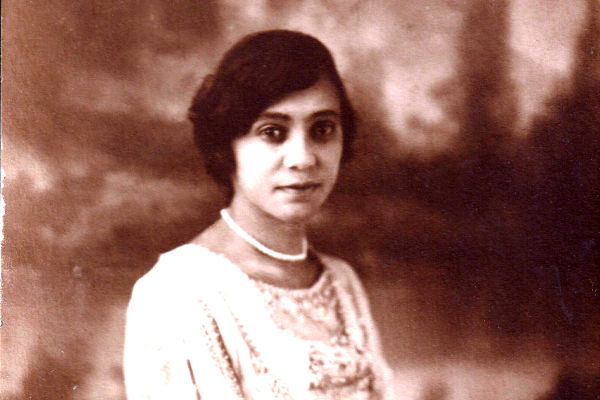
Florence Beatrice Price, April 9, 1887 – June 3, 1953, was an African-American classical composer, pianist, organist, music teacher who flourished during the Harlem Renaissance.
Price is noted as the first African-American woman to be recognized as a symphonic composer, and the first to have a composition played by a major orchestra.
Her Early Life
She was born as Florence Beatrice Smith to Florence (Gulliver) and James H. Smith on April the ninth, 1887, in Little Rock, Arkansas, one of three children in a mixed-race family. Despite racial issues of the era, her family was well respected and did well within their community. Her father was a dentist and her mother was a music teacher who guided Florence’s early musical training. She had her first piano performance at the age of four and had her first composition published at the age of 11.
By the time she was 14, Florence had graduated as valedictorian (scholar) of her class. After high school, she later enrolled in the New England Conservatory of Music in Boston, Massachusetts with a major in piano and organ. Initially, she passed as Mexican to avoid racial discrimination against African Americans, listing her hometown as “Pueblo, Mexico.” At the Conservatory, she studied composition and counterpoint with composers George Chadwick and Frederick Converse. Also while there, Smith wrote her first string trio and symphony. She graduated in 1906 with honors, and with both an artist diploma in organ and a teaching certificate.
Career
Smith returned to Arkansas, where she taught briefly before moving to Atlanta, Georgia, in 1910. There she became the head of the music department of what is now Clark Atlanta University, a historically black college. In 1912, she married Thomas J. Price, a lawyer. She moved back to Little Rock, Arkansas, where he had his practice. After a series of racial incidents in Little Rock, particularly a lynching of a black man in 1927, the Price family decided to leave. Like many black families living in the Deep South, they moved north in the Great Migration to escape Jim Crow conditions and settled in Chicago, a major industrial city.
There Florence Price began a new and fulfilling period in her composition career. She studied composition, orchestration, and organ with the leading teachers in the city, including Arthur Olaf Andersen, Carl Busch, Wesley La Violette, and Leo Sowerby. She published four pieces for piano in 1928. While in Chicago, Price was at various times enrolled at the Chicago Musical College, Chicago Teacher’s College, University of Chicago, and American Conservatory of Music studying languages and liberal arts subjects as well as music. Financial struggles and abuse by her husband resulted in Price getting a divorce in 1931.
She became a single mother to her two daughters. To make ends meet, she worked as an organist for silent film screenings and composed songs for radio ads under a pen name. During this time, Price lived with friends. She eventually moved in with her student and friend, Margaret Bonds, also a black pianist and composer. This friendship connected Price with writer Langston Hughes and contralto Marian Anderson, both prominent figures in the art world who aided in Price’s future success as a composer.
Together, Price and Bonds began to achieve national recognition for their compositions and performances. In 1932, both Price and Bonds submitted compositions for the Wanamaker Foundation Awards. Price won first prize with her Symphony in E minor, and third for her Piano Sonata, earning her a $500 prize. (Bonds came in first place in the song category, with a song entitled “Sea Ghost.”) The Chicago Symphony Orchestra, conducted by Frederick Stock, premiered the Symphony on June 15, 1933, making Price’s piece the first composition by an African-American woman to be played by a major orchestra.
A number of Price’s other orchestral works were played by the WPA Symphony Orchestra of Detroit, the Chicago Women’s Symphony, and the Women’s Symphony Orchestra of Chicago. Price wrote other extended works for orchestra, chamber works, art songs, works for violin, organ anthems, piano pieces, spiritual arrangements, four symphonies, three piano concertos, and a violin concerto. Some of her more popular works are: “Three Little Negro Dances,” “Songs to a Dark Virgin”, “My Soul’s Been Anchored in the Lord” for piano or orchestra and voice, and “Moon Bridge”.
Price made considerable use of characteristic African-American melodies and rhythms in many of her works. Her Concert Overture on Negro Spirituals, Symphony in E minor, and Negro Folksongs in Counterpoint for string quartet, all serve as excellent examples of her idiomatic work. Price was inducted into the American Society of Composers, Authors, and Publishers in 1940 for her work as a composer. In 1949, Price published two of her spiritual arrangements, “I Am Bound for the Kingdom,” and “I’m Workin’ on My Buildin'”, and dedicated them to Marian Anderson, who performed them on a regular basis.
Personal life and death
In 1912, Price married attorney Thomas J. Price upon returning to Arkansas from Atlanta. Together, they had two daughters and a son; Florence (d. 1975), Edith and Thomas Jr. The Price children were raised in Chicago. Florence Price divorced Thomas Price in January 1931, and on February 14, 1931, she married the widower Pusey Dell Arnett (1875–1957), an insurance agent and former baseball player for the Chicago Unions some thirteen years her senior. She and Arnett were separated by April 1934; they apparently never divorced. On June 3, 1953, Price died from a stroke in Chicago, Illinois, at age 66.
Discovery of manuscripts
Following her death, much of her work was overshadowed as new musical styles emerged that fit the changing tastes of modern society. Some of her work was lost, but as more African-American and female composers have gained attention for their works, so has Price.
In 2001, the Women’s Philharmonic created an album of some of her work. Pianist Karen Walwyn and The New Black Repertory Ensemble performed Price’s Concerto in One Movement and Symphony in E minor in December 2011.
In 2009, a substantial collection of her works and papers were found in an abandoned dilapidated house on the outskirts of St. Anne, Illinois. These consisted of dozens of her scores, including her two violin concertos and her fourth symphony.
As Alex Ross stated in The New Yorker in February 2018, “not only did Price fail to enter the canon; a large quantity of her music came perilously close to obliteration. That run-down house in St. Anne is a potent symbol of how a country can forget its cultural history.”
In November 2018, the New York-based firm of G. Schirmer announced that it had acquired the exclusive worldwide rights to Florence Price’s complete catalog.
Composition style
Even though her training was steeped in the European tradition, Price’s music consists of mostly the American idiom and reveals her Southern roots. She wrote with a vernacular style, using sounds and ideas that fit the reality of urban society. Being deeply religious, she frequently used the music of the African-American church as material for her arrangements. At the urging of her mentor George Whitefield Chadwick, Price began to incorporate elements of African-American spirituals, emphasizing the rhythm and syncopation of the spirituals rather than just using the text. Her melodies were blues-inspired and mixed with more traditional, European Romantic techniques. The weaving of tradition and modernism reflected the way life was for African Americans in large cities at the time.
Legacy and honors
In 1964, the Chicago Public Schools opened Florence B. Price Elementary School (also known Price Lit & Writing Elementary School) at 4351 South Drexel Boulevard in the North Kenwood neighborhood of Chicago, Illinois in her honor. Price student body was predominately African-American. The school operated from 1964 until the school district decided to phase it out in 2011 due to poor academic performance which ultimately led to its closing in 2013. The school housed a piano owned by Price. The school building currently houses a local church as of 2019. In February 2019, The University of Arkansas Honors College held a concert honoring Price. In October 2019, the International Florence Price Festival announced that its inaugural gathering celebrating Price’s music and legacy would take place at the University of Maryland School of Music in August 2020.
Photo credit: 1) Wikiepdia. 2) Yotube.
Become a Harlem Insider!
By submitting this form, you are consenting to receive marketing emails from: Harlem World Magazine, 2521 1/2 west 42nd street, Los Angeles, CA, 90008, https://www.harlemworldmagazine.com. You can revoke your consent to receive emails at any time by using the SafeUnsubscribe® link, found at the bottom of every email. Emails are serviced by Constant Contact








